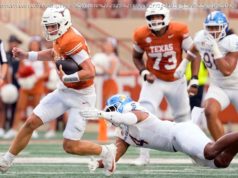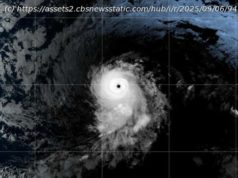Americans who identify as both white and Christian now only represent 43 percent of the population share, which represents a 38 percent drop in 40 years.
Americans who identify as both white and Christian now only represent 43 percent of the population share, which represents a 38 percent drop in 40 years.
Forty years ago, white Christians represented about eight in 10 Americans (81 percent) , according to the « America’s Changing Religious identity » report.
These findings come from a new survey released by the Public Religion Research Institute on Wednesday, Sept. 6, and are based on findings from 101,000 Americans from all 50 states. The survey conducted in 2016 is touted as the largest survey of American religious and denomination identity ever.
Another sharp decline highlighted by the report is that only 17 percent of Americans identify as white evangelical Protestants. This share of the population is down 6 percent since 2006, and 38 percent since 1976.
Some of the key factors in these declines is said to be due to immigration, an aging white Christian base and the growing amount of people who reject organized religion.
« This report provides solid evidence of a new, second wave of white Christian decline that is occurring among white evangelical Protestants just over the last decade in the U. S., » Robert P. Jones, PRRI CEO, said.
« Prior to 2008, white evangelical Protestants seemed to be exempt from the waves of demographic change and disaffiliation that were eroding the membership bases of white mainline Protestants and white Catholics. We now see that these waves simply crested later for white evangelical Protestants. »
Some other key highlights in the report is the fact that more than a third of Republicans identify as white evangelicals and three-quarter as white Christians. On the other side of the aisle, white Christians in the Democratic party are down from 47 percent in 2006 to 29 percent currently.
In all, 40 percent of Democrats identify as having no religious affiliation.
« So often, white evangelicals have been pointing in judgment to white mainline groups, saying when you have liberal theology you decline, » Jones told the Associated Press. « I think this data really does challenge that interpretation of linking theological conservatism and growth. »
The report also takes a closer look at states, in which it says there are 20 states where no religious group owns a greater share than the religiously unaffiliated. On the other side of this spectrum, no state is less diverse than Mississippi in which 60 percent of people identify as Baptist.
Mississippi is followed by Alabama, Arkansas, South Carolina and Tennessee as being the least religiously diverse states. Head to the northeast (and one out west) for the most religiously diverse states in New York, New Jersey, Connecticut, Massachusetts and California.
The PRRI’s report also sheds light on what the future of the United States’ religious landscape might look like by examining the most popular religions with people younger than 30.
« More evidence that America’s future is less white and less Christian: Muslims, Hindus, Buddhists, and the religiously unaffiliated are all far younger than white Christian groups, » the report reads. Forty-two percent of Muslims, 36 percent of Hindus, 35 percent of Buddhists and 34 percent of the religiously unaffiliated are younger than 30.
While just 11 percent of Catholics and white Protestants are under 30, according to the report. To read the full report, click here.






